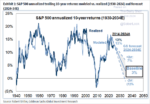Overview: The US dollar is a little firmer ahead of the November employment data. It is trading mostly inside yesterday's range. It is in a wide range against the Japanese yen (~JPY142.50-JPY144.50) even if not as wide as yesterday (~JPY141.70-JPY147.30). The Canadian and Australian dollars are the strongest among the G10 currencies, while the South Korean won, and Taiwanese dollar are the best performers among the emerging market complex. Gold, which also traded in an extremely wide range at the start of the week has coiled back in a narrow range and is confined to about a $2026-$2034 range today. It is off about 2% this week, which would snap a three-week advance.
Oil has also steadied. After falling below $68 a barrel, January WTI reached about $71.30 earlier today, but is back near $70.40 in the European morning. Equities are mostly firmer. Most of the large bourses in the Asia Pacific region but Japan rose. Europe's Stoxx 600 is recovering yesterday's loss and is up about 0.6% in late European morning turnover. US index futures are narrowly mixed. Benchmark 10-year yields in Europe are 5-7 bp higher to pare this week's drop to 10-14 bp. The 10-year US Treasury yield is up three basis points to 4.18%. It was slightly above 4.25% at the end of last week.
Asia Pacific
Spurred by comments from BOJ Deputy Governor Himino that played down the adverse effects of higher rates in Japan and Governor Ueda's meeting with Prime Minister Kishida to discuss monetary policy, speculation escalated that a rate hike could be delivered before year end. This was seen in the swaps market, where the odds of a hike rose to nearly 50% at one point from slightly less than 5% at the start of the week. The central bank meets on December 18-19, but unlike the Federal Reserve and the European Central Bank, which will update economic forecasts next week, the BOJ's economic update will not be delivered until January. The overnight interest rate is targeted at minus 0.10%, but it has been trading near minus 0.01%. We have argued in favor of moving when the central bank was not under pressure from the markets in terms of the 10-year JGB yield and the exchange rate. We also thought that exiting negative interest rates before further adjustments to the Yield-Curve Control policy was also likely.
Timing is the issue. A move this month is possible, but still seems unlikely, and a Bloomberg survey found more than two-thirds of the economists polled look for a move by April. A little more than half think April, the beginning of the new fiscal year, is the most likely timing of the exit from negative rates. In the previous survey in October, 29% saw the move in April. As today's report shows, despite what was heralded a successful spring wage round this year, labor cash earnings have barely grown. The year-over-year pace peaked in May near 2.9% and fell for the next four months to 0.6% in September. They rose back to 1.2% in October. Adjusted for inflation, real wages are off 2.3% year-over-year. Consumer spending (and capex) contracted in Q2 and Q3, and as Tokyo's November CPI recently confirmed, price pressures are easing (as the BOJ had suggested). Household spending in October was 2.5% lower year-over-year. It has risen by 1.2% year-over-year in October 2022, but has fallen every month since then but February.
Separately, Japan revised Q3 GDP lower to -0.7% from -0.5% quarter-over-quarter (-2.9% annualized). Japan also reported October current account figures. Despite the historically undervalued yen (according to the OECD's purchasing power parity model), Japan continues to run a chronic trade deficit (JPY472 bln in October from JPY341 bln in September). The current account, however, is driven by interest, profits, royalties, and licensing fees. Its surplus narrowed to a little less than 2% of GDP last year but appears on track to recovery to pre-Covid proportions near 3.5% of GDP this year.
China is due to report its November inflation measures the first thing tomorrow. Yes, on Saturday. Falling pork prices are likely to have prevented a recovery in the CPI from the -0.2% seen in October. The weakness in goods prices (-0.1%) is cited as evidence of weak demand, but there also is a supply component. Excess capacity is also an expression of surplus capital, and the poor profitability lends this argument credence. Service prices have increased by 1%. The core measure has performed a bit better. After being stuck at 0.8% year-over-year July through September, it fell to 0.6% in October. Turning to producer prices, deflation has been hard to shake. On a year-over-year basis, producer prices turned negative in October 2022. They well to -5.4% in June before improving steadily in Q3 to -2.5% in September. They slipped in October and are likely fell further in November. Producer prices are producer incomes and the continued deflation suggest weak profits. The deflationary conditions give officials scope to ease monetary policy and the international context (anticipated rate cuts from most major financial centers but Tokyo) is, arguably more conducive. The PBOC will has an opportunity to cut the benchmark rate (one-year Medium-Term Lending Facility) next week, but it seems unlikely. The last cut has not been fully passed on and officials have seemed to be more focused on quantities (of money) rather than prices (interest rates), which is why a cut in reserve requirements may be the next step.
The US dollar was plunged anew in the North American session yesterday, reaching around JPY141.70 in early afternoon dealings. This is more than three standard deviations from below the 20-day moving average. When European markets closed, it was hovering around JPY144.00. The dollar quickly snapped back on what appeared to be short covering from the interbank community and traded above JPY144.00 before settling. The two-standard deviation mark (the Bollinger Band) is near JPY144.80. Obviously, there has been a dramatic adjustment. On big moves this year, the dollar has covered about a three-yen range. Yesterday's range was about 5.6 yen. Volatility is auto-correlated--i.e., a high vol day is usually followed by another high vol day. Today's range has been JPY142.50-JPY144.50. Yet, given next week's FOMC meeting and the BOJ meeting the following week, medium- and longer-term investors are likely to remain on the sidelines until the policy backdrop is clearer. The Australian dollar recorded an outside up day, trading on both sides of Wednesday's range and settled above Wednesday's high. It had peaked on Monday near $0.6690 and fell to almost $0.6525 yesterday before rebounding. It recouped half of its loss near $0.6610 and stopped shy of the (61.8%) retracement closer to $0.6630. It is trading quietly today in a $0.6590-$0.6620 range. The dollar is firm against the Chinese yuan but is also trading inside yesterday's range (~CNY7.1475-CNY7.1660). Net-net, the dollar is up about 0.5% against the yuan this week, its first weekly gain in four weeks. The dollar's reference rate was set at CNY7.1123 (CNY7.1140 yesterday) compared with the average in Bloomberg's survey for CNY7.1420. Today was the highest dollar fix for the week.
Europe
Europe is caught between the developments in Japan and the US employment data today. Since the softer-than-expected preliminary CPI on November 30 (2.4%), the euro has underperformed. Another way it has been expressed is by the nearly 50 bp decline in the Germany two-year yield. Despite the aggressive move in the US, the two -year interest rate differential has widened nearly 20 bp (since the CPI. The US premium has risen from the lower end of a four-month range near 180 bp to the upper end, a little north of 200 bp.
This is in stark contrast with the US-UK differential. The US premium has narrowed around two basis points since November 30. Sterling has lost about half as much as the euro during the same time. Ahead of next week's ECB meeting, the swaps market is pricing almost a 75% chance it delivers the first rate cut in March. It was closer to 80% at the end of last week, and below 40% before the EMU CPI. The Bank of England meets next week, as well. The swaps market sees about a 15% chance of a Bank of England cut by the end of Q1 24. Little changed on the week and practically no chance at the end of last month.
Through yesterday's low near $1.0755, the euro had fallen about 2.6-cents since the preliminary CPI. It recovered to move above Wednesday's high (~$1.0805) but failed to close above it. The euro needs to close above $1.0815 to help steady the technical tone, and a move through $1.0855 could signal a low is in place. It is in a narrow range so far today, mostly between $1.0775 and $1.0800. Sterling recovered from a nine-day low yesterday near $1.2545 and resurfaced above $1.2600. However, buying dried up in front of Wednesday's high around $1.2615. It is in a little less than half-of-a-cent range under $1.26 today. The week's high ~ $1.2725 was set Monday. A move back above $1.2650 would bring it back into view. Meanwhile, the euro has been forging a base near GBP0.8550.
America
Fed officials may be just an anxious about today's employment report traders. A solid report could encourage a more robust effort to calm market speculation of an early rate cut (almost a 75% chance discounted by the Fed fund futures for Q1 24). The slowing of job growth is evident. With the revisions, the US has created 204k jobs on average over the past three months, down from a 254k average pace in the previous seven months of the year. The median forecast for the November increase is tantamount repeating October's 150k increase with the returning striking auto workers. A 0.3% rise in hourly earnings is consistent with another sequential slowing of the 12-month rate to 4.0%, which would be the slowest since June 2021. Also, a tick-up in the unemployment rate to 4.0%, the first four-handle, would likely impact market psychology/sentiment and providing new fodder for the discussion over where the inflection point takes place.
The greenback rose to a six-day high near CAD1.3620 yesterday. Above there, the risk initially extends into the CAD1.3640-60 area, but it is better offered today, slipping to about CAD1.3570. A break of CAD1.3530 is needed to boost confidence that a high is in place. Many narratives still see the Canadian dollar as a petrocurrency, but the correlation between changes in the exchange rate and WTI are modest at a little less than 0.25 for the past 30- and 60-days. The 100-day correlation is about 0.20. A stronger correlation is with the S&P 500, a proxy for risk. The 60- and 100-day correlations are a little above 0.50, while the 30-day correlation is slightly above 0.60. The correlation with changes in the Dollar Index is even a little higher. Meanwhile, the US two-year premium over Canada is near a nine-month high. The US dollar firmed to approach the three-week high set on Tuesday around MXN17.5655, stopping shy near MXN17.5420 and settling below MXN17.50. There were two notable developments yesterday. First, Mexico's reported the first acceleration in headline CPI since January. It rose to 4.32% from 4.26%. However, the core rare continued its slowdown (5.3% vs. 5.5%). Second, Fitch affirmed its BBB- rating, the lowest investment grade credit. S&P and Moody's give Mexico their second-to-lowest investment grade rating. The swaps market has a little more than 50 bp of easing discounted over the next six months. The greenback is trading quietly today in a mostly a MXN17.41-MXN17.51 range. Barring a sharp reversal, this will be the first back-to-back weekly dollar gain against the peso since the end of Q3.
Tags: #USD,China,Currency Movement,ECB,EMU,Featured,inflation,Japan,jobs,newsletter,US





















